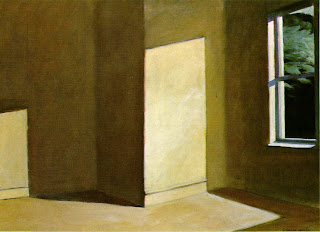I will make my students read this!
Who Owns the Color Red?: 
Louboutin shoes (via christianlouboutinsau.com)
Can a person own a color? Yves Klein may say yes, but Yves Saint Laurent begs to differ. Over the course of the past year the luxury goods company has been tied up in legal proceedings against the shoe designer Christian Louboutin, who believes his signature red-soled shoes are being ripped off by YSL. In my mind, this fashionable fighting has sparked speculation over the constant accusation of plagiarism that plagues creative fields.
In August a New York district court denied the preliminary injunction Louboutin requested against YSL’s ruby-bottomed pumps under the opinion of Judge Victor Marrero that a designer cannot have a monopoly on a color, nor did he believe consumers would be somehow tricked into thinking that the YSL shoes were Louboutins. Even though court will reconvene on January 24 because Louboutin just can’t give it up, I have to say the entire argument sounds petty and, to be blunt, a little selfish.
Now, even though I’ve been attempting for years to trademark the lovely shade of aubergine the circles under my sleep-deprived eyes are with little victory, this is not a personal vendetta against ownership of certain design elements. Tiffany, for example, has their turquoise (Pantone number and all) copyrighted, and the late Yves Klein patented his particular shade of blue. However, Klein’s patent on International Klein Blue had more to do with his chemical invention of the color, and Tiffany’s trademark applies only to competing brands because of the jewelry company’s long association with the specific color. Those are valid reasons to request protection, legally speaking, because they’re more or less aspects of brand identity that influence consumers. But most companies, as well as artists, seem to rapidly expect ownership and credit to any and all aspects of their creations, when in actual fact the color of a sole is no more grounds to sue than, say, a particular style of painting or sculpture.

Picasso's Les Desmoiselles D'Avignon (1907) (via moma.org) and an image of an African Fang Mask (via Wikipedia.org) (click to enlarge)
This constant quibbling over who owns what reminds me, inevitably, of the criticism (and lawsuits) constantly hurled at artist Shephard Fairey. Designer of the “Obama Hope” posters (which I’m hoping pop up again after the New Hampshire debates), Fairey’s signature style is one of appropriation and repurposing of images, much like Andy Warhol and Roy Lichtenstein. He may have a hard time admitting he actually appropriates images, but in my eyes the works he pulls from are altered in some way, though that isn’t enough for some people who continue to cite him as a plagiarist.
But aren’t we jumping the gun a bit to criticize an artist because he or she repurposes imagery and motifs? Japanese artists didn’t sue Matisse or van Gogh for copying their aesthetics, just as African artists didn’t sue Picasso. And yes, I’m aware the circumstances were a tad different, but my point remains that artists have utilized techniques and aesthetics from other sources forever, and today that historical practice is mostly lauded by art historians while reviled when turned to contemporary artists.
Besides, were talking about fashion here, people. You’d be hard-pressed to find one designer in history who has not in some way appropriated elements from his or her contemporaries or predecessors. Not a season goes by where someone magically reinvents the dress. They’re artists working under extremely limited and restrictive conditions and yet I have still not witnessed one major designer who completely copies someone else’s creation. Canal Street maybe, but never the runways of Paris.
This might come off as some armchair litigation, but I do believe that all artists should calm down a little bit before crying out “Plagiarism!” at every turn. Consumers associate red soles with Christian Louboutin just as museumgoers associate silkscreens with Andy Warhol, and they’ll realize that any similarities that appear in proceeding works owe a debt to their predecessors. But unless it’s a complete rip-off, I think artists should remember that imitation is the sincerest form of flattery before they call their lawyers.


















